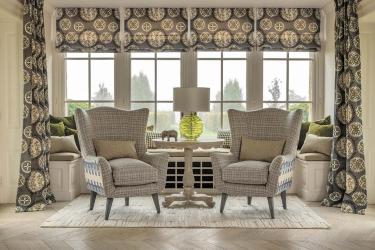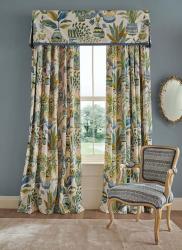Window treatments are an essential element when finishing a room. Cornices and valances are two design details made to accompany the space above your curtains and hide the hardware of the window treatment. A cornice is a decorative box made of wood and mounted to the wall above the curtains. A valance is a decorative box made of fabric or drapery and mounted to the curtain rods. We’ve asked design professionals to give their opinion on which window accessory they prefer.
Cornice
Both a valance and a cornice hide window hardware and add finesse to a window, however I prefer a cornice. A cornice is a more structured accessory, easy to add extra detail, and can provide more of an architectural connection to a space. Barbara Collins, Barbara Collins Interior Design
Valance
Our clients have fully embraced the idea of having a valance for the shades to roll up under and disappear, as opposed to a cornice. The valance can often be coordinated to the fabric on the shade for a smooth transition. Debra Kisinger, Two Blind Guys.
Both
I would select a cornice for a space that requires a more formal or traditional look. Cornices are often larger and more elaborate than valances, adding a sense of grandeur to a room. They can be used to hide hardware and create a clean, finished appearance. On the other hand, a valance would be a good choice for a more casual or contemporary space. Valances are typically smaller and less formal than cornices. They can be used to add a touch of color or texture to a room without overwhelming the space. Savannah Sells, Youtopia Designs
I think that both are classics. I like to use them in different situations. I love a cornice for its structure and clean lines. It doesn't take a lot of fabric and it's one of the few top treatment styles that can look masculine. Cornices are great in a family room or office. Valances come in many styles and can be very simple or extremely elaborate. Many are feminine, but there are some simple styles that are quite versatile. I am pleased to see more window treatments being specified for projects. Teddy Karl, The Great Cover-Up







